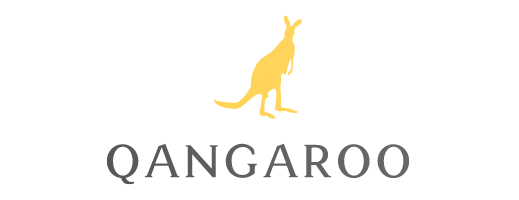Qangaroo: Education Continuity on an Ethical and Inclusive Technology Platform

Qangaroo is a platform designed by educators for educators ensuring educational continuity and technological inclusivity in an ethical environment.
- Vision and value proposition:
- Qangaroo is a technologically-unbiased, easy-to-use teaching and learning platform designed by educators for schools around the globe.
“If you solve all the problems but one, education, then the next generation will create all the problems.
If you solve only one problem, education, then the next generation will solve all the problems.”
~ Thomas Jefferson
2. The problem:
- There are three main problems: (1) education continuity, (2) technological gap, (3) and ethically protecting student data.
- After COVID 19, there will be a need for a new pedagogy that adopts more online learning tools. We can’t expect things to go back to exactly the way they were. Education, like everything, is evolving.
- The most useful online teaching tools available to educators are from for-profit companies such as Google, Microsoft, Zoom, Adobe, etc.
- Many of these products require coordination between platforms instead of housing everything in one secure place.
- Parents in many geographies object to having a for-profit corporation as the base architecture for their child’s school.
- Teachers and principals may also object to using a platform offered by a for-profit entity.
- There’s no simple-to-use platform, specifically-geared for and trusted by educators, available globally.
- The gap in global online education is (potentially) larger than in the U.S. There is a need for simpler software solutions for teachers and students on a global scale.
- Data privacy is an issue, especially with children under 18. The watchdogs in charge of the security of that data shouldn’t be working for a for-profit corporation.
- There is no trusted source, geared specifically for educators, that actually TRAINS educators to use an online learning platform.
- Beyond the pure questions of education continuity and technological gap at a micro level – classrooms and schools, there is a broader impact at the macro level, countries.
3. Target market and opportunity:
The opportunity is to create a free, easy-to-use, all-in-one teaching and learning platform designed by educators for educators in public school systems around the entire globe.
- Students
- Teachers
- Education facilitators
- Parents
- Governments (national, state, and/or city)
4. The solution:
- Qangaroo eases the transition between the physical and the virtual classroom environments.
- Qangaroo ensures pedagogical content and interactions are on the same platform, be it used in a physical classroom or in a virtual classroom.
- From online, on-site, hybrid to concurrent hybrid sessions.
- In doing so, it ensures education continuity. Moreover, in doing so with very accessible technology, it participates to reduce the digital divide for children.
- By having no ties to a corporate partner, it provides an ethically healthy solution to protecting student data.
Feature Description:
- Chat Tool
- Office Suite
- Video Conference System
- File Storage
- Virtual Campus
- One ID/Password
- Myonlineclassroom.org
Feature Prioritization:
- File storage and network security will be incredibly important as we scale.
Architecture:
- Qangaroo is a technological platform. It allows each user to connect with other participants according to what is relevant considering her/his profile. A parent will connect with other parents, teachers and school administrators. A teacher will connect with teachers and pupils.
- Our MVP runs on a server equipped with open-source software. this suite of software has been integrated so that a user needs only one login and password and have access in a very easy way to the strict minimum of options that her/his profile requires.
5. Team:
- Patrick McKay is an advertising industry creative leader with a track record of providing powerful marketing communications for companies from startups to Fortune 500. His ability to embrace technology in the quest for relevance, find powerful executions quickly, and do so under the demands of an ever-thinly-sliced media landscape comes from three decades in the business. He’s responsible for ground-breaking campaigns in TV, print, OOH, radio, digital and non-traditional. He’s notched several first-ever web achievements and has busted rank many times with high performing work in the social media landscape.
- Thierry Warin, Faculty member at HEC Montreal. Thierry is also interested in economic development and has done research on this topic in the Balkans for the World Bank and Haiti for the Inter-American Development Bank. Thierry has also created a small NGO in Haïti called Ed’Haïti aiming at helping young children to get access to primary education.
6. Competition:
- Google Classroom is a free, easy-to-use (arguably), all-in-one platform, built (obviously) with the advice of educators. But Google is a huge and extremely profitable organization that uses data for profit at it’s core. This is uncomfortable for true educators in so many ways.
- Zoom is just video. It needs other platforms to aid true education. It’s also best in paid form.
- Adobe Connect for Education is subscription-based.
- There is a free version of Microsoft Teams (video), but you have to buy Office 365 for Educators to get it. And both those products are at their best and most secure in paid form. Also, they’re different platforms, requiring teachers to be experts in both Teams and Office.
- Cisco Webex is free for educators, but it’s only a video service.
- Classmaster is free until the end of this academic year only. And it has no live video component.
- McGraw Hill Connect is free during Covid, but that also won’t last long.
- OpenStax (Through Rice University) is for textbooks only.
- Talent LMS sounds good, but is very limited in the free version,
- iTunes U has a free system for teaching, but it is also limited when free, and is only supported through Apple products. Also doesn’t seem to support live class video.
- Thinkific is limited in functionality, especially in the free version.
- Schoology is limited in functionality, especially in the free version.
- Open source solutions exist such as Moodle or Sakai, with lots of plug-ins that could provide the same level of service.
Again, there are hundreds of tools for educators, but the choices for an all-in-one platform made for educators are slim. (Only Google Classroom at the moment, I believe. Still looking.) And they are offered by for-profit organizations.
Differentiation:
- Qangaroo is a free, easy-to-use, all-in-one teaching and learning platform designed by educators for educators in public school systems around the entire globe.
- Free is the only version. There is no freemium structure at work to limit educators.
- It’s easy-to-use. It’s in one platform. Has just the tools you need. No temptation to show-off tech capabilities. And even provides training.
- Instead of being designed by corporate giants under the advice of educators, it’s actually designed by educators for educators.
- It focuses on the needs of public schools around the globe.
- It’s only goal is to give educators, even in the most compromised situations, a way to provide education to children, also often in the most compromised situations, easily.
7. Images and Visuals:
- MVP website: www.maclasseenligne.org (development version of the international version)
8. Appendices
- To go further, please find our PRD here: [ PRD_mckay_warin_qangaroo]



